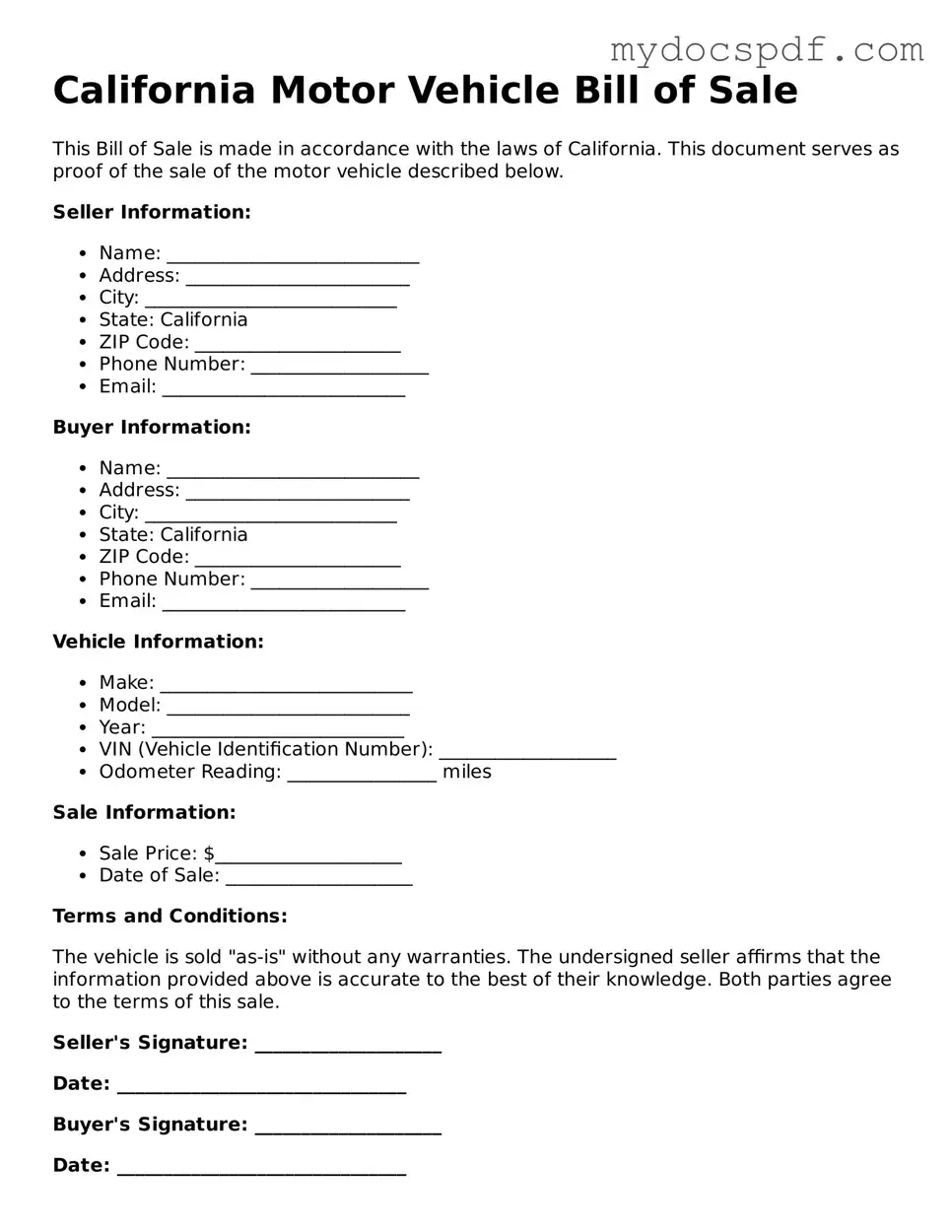California Motor Vehicle Bill of Sale
This Bill of Sale is made in accordance with the laws of California. This document serves as proof of the sale of the motor vehicle described below.
Seller Information:
- Name: ___________________________
- Address: ________________________
- City: ___________________________
- State: California
- ZIP Code: ______________________
- Phone Number: ___________________
- Email: __________________________
Buyer Information:
- Name: ___________________________
- Address: ________________________
- City: ___________________________
- State: California
- ZIP Code: ______________________
- Phone Number: ___________________
- Email: __________________________
Vehicle Information:
- Make: ___________________________
- Model: __________________________
- Year: ___________________________
- VIN (Vehicle Identification Number): ___________________
- Odometer Reading: ________________ miles
Sale Information:
- Sale Price: $____________________
- Date of Sale: ____________________
Terms and Conditions:
The vehicle is sold "as-is" without any warranties. The undersigned seller affirms that the information provided above is accurate to the best of their knowledge. Both parties agree to the terms of this sale.
Seller's Signature: ____________________
Date: _______________________________
Buyer's Signature: ____________________
Date: _______________________________
